---------------------------------------------------------
You got your first fluffy chicks or ducklings – congratulations! While those fuzzy little ones are busy growing and you are daydreaming about all the fresh eggs that will be coming your way soon, it’s the perfect time to build some cozy nests for all those eggs.
Your birds will instinctively seek out a comfortable, dark, private space for laying their eggs. As a chicken & duck farmer, you can either provide them a place to lay their eggs where you can easily collect them, or you can let them make their own space.
You don’t HAVE to provide nest boxes, they will make their nests and lay their eggs somewhere. They often will pick a quiet corner of the coop, or under a bush in the run. Nest boxes are mainly for the convenience of the humans who want to collect eggs. It keeps them all in one place, and also helps keep them cleaner vs being laid in the dirt.

How many nest boxes do I need?
You will want one nest box for every 4-5 hens you are keeping. They are more than happy to share, and often you will find there is one “favorite” box that the girls will jostle about to get in even when it’s occupied and there are several open nests nearby.
How big should nest boxes be?
Nest boxes should be cozy enough that the hen feels safe and comfortable. She should be able to easily stand up and turn around. For bantam chickens & call ducks I recommend 12 in x 12 in and 16 inches tall. Standard size chickens should have 16 in x 16 in box that is 18 inches tall. Standard size duck nests should be 18 in x 18 in and 18 inches tall.

What should I put in the nest boxes?
Straw or soft pine shavings make excellent nesting material. The birds will want to have materials to arrange to make the nest just how they want. The deeper you can make the nest bedding the better. If your boxes are shallow and have a hard bottom, you might want to consider lining the nests with vinyl peel & stick tiles. They are easy to clean and provide a softer spot for eggs to pop out onto.
Nesting herbs
Nesting herbs are totally optional, but many chicken keepers like to sprinkle them in the nest boxes. You can buy premade mixes online or at your local feed store, or make your own. Herbs with calming scents are popular like basil, lavender, lemon balm, marigold/calendula, rose petals, or yarrow. Herbs that repel insects are also popular like mint, catnip, oregano, thyme, or rosemary. The hens can nibble them for snacks, enjoy the aromatherapy benefits, and they make the coop smell wonderful.

I am not handy, do I have to build them?
Definitely not! There are plenty of options like pre-made nest boxes, clean cat litter boxes, milk crates, shelving units with cubbies, 5 gallon buckets, plastic dish tubs or storage containers – there are so many options!
Where should I put the nest boxes?
This is going to depend on your coop set up. Some things to keep in mind:
*ducks are unlikely to use nest boxes that are not on the ground, chickens don’t mind nests that are high up or stacked
*if you plan to ever use a broody hen to hatch eggs, you should have at least one really roomy nest that is not up high so the chicks/ducklings won’t fall out
*as the hen is scratching around and arranging her nest she will kick the shavings & straw out of the nest. Putting a lip in front of the box will help keep it in
*flat surfaces invite chickens to hang out or roost on them. Places that they hang out in end up covered in poop which is not what you want for your nest area. If you have a roof to your nest boxes, you should make it slanted
External nest boxes
External boxes are the best choice for small coops because they don’t take up any floor space. They also allow you to collect eggs without going inside the coop, keeping your shoes clean.
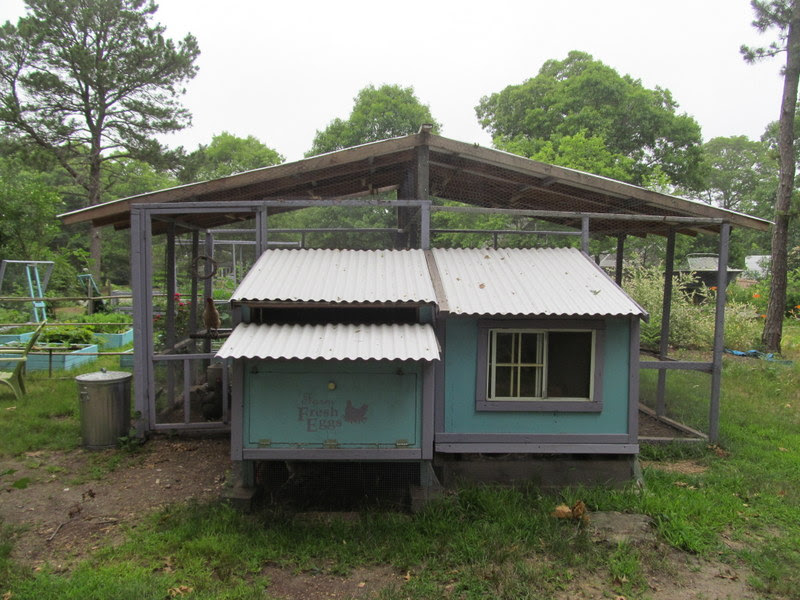
Mixed duck & chicken nest boxes
This is the nest box area I built for my mixed chicken & duck flock. It is 8 feet long and about 2 feet deep. We have six nest boxes on the top that are 16 inches x 16 inches for the chickens. On the ground level are three extra large nesting areas for the ducks or for hatching families. They are about 30 inches wide and 24 inches deep. I might have intended the lower nests to be for the ducks, but the lower left hand box is everyone’s favorite – chicken & duck. My favorite thing about these nests are I built them for free using spare wood in my barn!



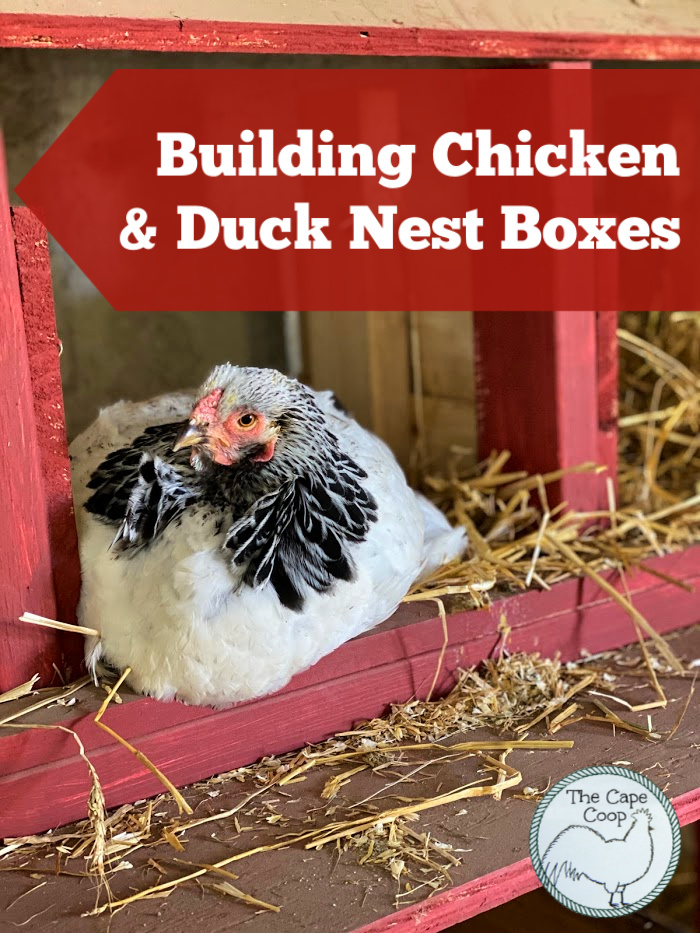



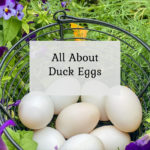
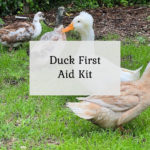
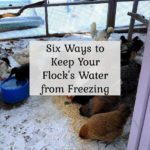
Sammy
Tuesday 22nd of September 2020
Hi Liz!!
Thanks for the helpfull blog!!! Is it possible for turkey and free range chickens to live together? Do they need different types of feed?
Liz
Tuesday 22nd of September 2020
I don't raise turkeys so I don't know a ton about them, but I do believe they can all have the same multi flock layer feed. I know plenty of people that keep the two birds together, but I do know you have to take some precautions against blackhead, which can devastate your turkey flock and can be carried by chickens